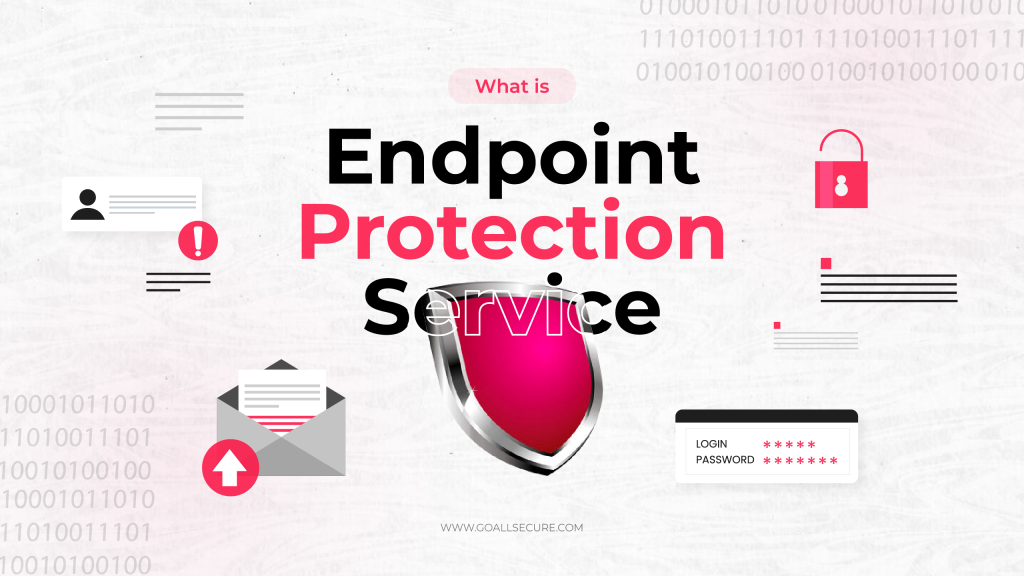The need to stay safe online is rising, especially as more and more of our personal information is being shared online. Nowadays, all types and sizes of businesses as well as individuals need cyber security technologies; they are no longer just for large corporations. For the security and privacy of an organisation as well as an individual, knowledge of cyber security tools is a must. Fortunately, there are lots of free cyber security technologies available that can help you monitor and address potential security issues. By using these tools, you can continuously guard your computer systems or networks and immediately get alerts to any potential hazards. Let’s take a closer look at the value of cybersecurity tools, different kinds of cybersecurity tools, and the best solutions currently on the market for fending off cyber security attacks.
What Are Cyber Security Tools?
Cybersecurity tools are the various programs or applications that are used to guard networks and systems against unwanted access. They are the first line of defence against different cyber-attacks, including unauthorised resource use, data breaches, and attacks on networks or intellectual property. They help you uncover and evaluate potential security issues. They also provide a defence against online crimes like identity theft and password trafficking. These tools are used by both businesses and individuals to protect their online privacy and security. With the assistance of these tools, you can ensure that you, your family, and your business are browsing safely.
Different Types of Cyber Security Tools
Based on particular domains or areas of interest, there are numerous cyber security tools available for your perusal. Every tool is designed keeping in mind specific threats that they are supposed to address. Here is a list of different types of cyber security tools:
Network Security Monitoring Tools
Network security monitoring tools are used to discover external network dangers by spotting and stopping attacks that come through the company’s intranet.
Firewall Tools
Firewalls can be built as hardware, software, or a hybrid of the two, and they are used to block unauthorised users from accessing the company intranet.
Packet Sniffers Tools
Such tools help you find apps that gather information for security research, generate atypical traffic, and track ups and downs in network demand. They intercept, log, and analyse network traffic and data.
Encryption Tools
Data is protected with encryption tools via decoding and encoding, as they make the text illegible to unauthorised users.
Web Vulnerability Scanning Tools
Web vulnerability scanning tools scan websites and analyse each file to detect vulnerabilities within web applications. They continuously monitor the possible security hazards of web applications.
Penetration Testing Tools
Pen testing simulates an attack on a computer system to gauge the system’s security
Anti-Virus Tools
This program is made to detect viruses and other hazardous malware, such as Trojans, worms, spyware, and adware.
There are a host of other categories of cyber security tools that can fit your unique requirements. They include digital forensic tools, IDS/IPS tools, email security tools, data loss prevention tools, etc. In the next section of this blog, we will dish out the top 10 cyber security tools that are a must-have for everyone.
Top 10 Cyber Security Tools for Professionals
By using these tools, you can better defend your data and IT infrastructure from online threats. These tools can be used by professionals as well as beginners to set up various authorization or authentication systems. With the right cyber security tools, you can also keep an eye on traffic, spot new users, and identify possible risks. Some of these tools can also improve network security, boost productivity levels, and improve website performance. Here is the list of the top 10 cyber security tools:
NMAP
NMAP, or Network Mapper, is an open-source tool used to scan networks and systems for security flaws. This tool is used to find hosts, acquire data on network devices, uncover security flaws, check the host device’s uptime, and take appropriate security actions. NMAP supports major OS platforms and is free. This tool’s key benefits are its adaptability, portability, accessibility, and well-outlined procedures.
Wireshark
Wireshark is a console-based tool that is used for network protocol analysis. One of its key characteristics is that it lets you examine network security in real-time. Wireshark is a great tool for examining every aspect of network traffic at various levels, from the connection level to every individual data packet. You can use this tool to capture each packet using pcap, store it, and perform a thorough analysis on it, which makes it simple to pinpoint security flaws in the network. Wireshark supports all the major OS platforms, like Windows, Linux, Solaris, macOS, etc.
Metasploit
Metasploit is a well-known and effective open-source penetration testing tool used by cyber security experts. Numerous built-in modules in Metasploit can be used for exploitation, payload executions, auxiliary tasks, encoding, listening, running shell scripts, and Nops. One of the striking features of this tool is that it provides the ability to find even the smallest growing holes and offers exceptional security around the clock. Compatible with a variety of different systems, including networks, servers, and web-based or online-based applications, among others. Metaspoilt is sure to improve your and your company’s security posture by doing impeccable security evaluations.
Aircrack-ng
Aircrack-ng is a free and open-source tool used to access the gaps in Wi-Fi network security. The main advantages of this tool are monitoring, analysing, and exporting data packets, as well as deciphering difficult Wi-Fi passwords and impersonating access points. A must-have set of wireless tools that is compatible with most wireless network interface controllers. Aircrack-ng mainly runs on Linux, but also on FreeBSD, macOS, OpenBSD, NetBSD, Windows, Solaris, and even eComStation 2.
Hashcat
Hashcat is a tool that is widely used to break passwords. The hashing algorithms supported by this tool are well above 250. The platforms for this tool are Windows, Linux, and macOS. The primary advantages of this tool are that it is quick, adaptable, diverse, and open-source. Hashcat is a very quick, effective, and flexible hacking tool that facilitates brute-force attacks by using the hash values of passwords that the tool is generating or applying. This helps in revealing compromised or easy-to-guess credentials. Unfortunately, this very tool has been used for nefarious reasons a lot because it is that good.
BurpSuite
BurpSuite is a powerful tool that can help businesses improve their network security. Security professionals use Burp Suite to conduct real-time system scans intending to locate critical flaws that could seriously compromise a company’s security. Additionally, it simulates attacks to discover the various ways in which these threats might erode and jeopardise the network’s security. There are three editions of Burp Suite: Community, Professional, and Enterprise. The Community edition can be downloaded for free, but it merely provides the basic tools. BurpSuite is an all-inclusive set of tools, and BApps are add-ons that may be installed to expand its functionality.
Nessus Professional
Nessus is the industry’s benchmark for vulnerability assessment, with the lowest false-positive rate and the most thorough vulnerability coverage of any other security tool. One can easily and rapidly scan for vulnerabilities using more than 450 pre-built templates and can also check for configuration compliance with CIS standards or other best practices. Nessus provides a user-friendly interface, simple navigation, and an overall positive user experience, making it very easy to use.
KeePass, Bitwarden, and Psono
All three of them are among the top password managers that save all of your login information for the websites and services you use, encrypt it, and store it safely somewhere you can access it at any time using a “master password.”
KeePass is a free tool that is accessible on Windows, Mac, Linux, Android, and iOS. One of its most striking features is its ability to store data locally on your device rather than syncing it to the cloud. This tool offers multiple user keys with the freedom to create unlimited passwords.
Bitwarden is another excellent open-source manager that works with most browsers. It has a free plan with no restrictions along with a paid and a business plan that offers more useful features. This tool is simple to use and suitable for those seeking a straightforward password manager. Bitwarden has an option for automatically filling up passwords.
Psono is a self-hosted and team-oriented password manager, which is best for small businesses as there is a subscription based on the number of users. You have complete control over your privacy because it enables you to host your login information on your own server. It contains password synching and sharing features, enabling seamless use across many devices.
pfSense
pfSense is an all-encompassing network security solution that provides a wide range of functions. It guarantees secure and dependable network performance and is renowned for its powerful firewall features and integrated VPN. Praised for its affordability, pfSense provides premium capabilities and advantages without charging the hefty price tag associated with competing software solutions. Additionally, pfSense can be set up for content filtering, traffic shaping, load balancing, and intrusion detection and prevention. Most commodity hardware, including old or dated computers and embedded systems, can support the installation of pfSense.
OWASP Zed Attack Proxy (ZAP)
OWASP ZAP is a popular penetration testing tool that aids online application developers and security experts in identifying and locating vulnerabilities. It offers two types of scans, active and passive, for web requests. OWASP ZAP can find issues like insecure deserialisation, compromised authentication, exposed sensitive data, security misconfigurations, SQL injection, cross-site scripting (XSS), and components with known vulnerabilities in web applications. This tool can also search for files and folders on web servers using dictionary lists and retrieve all links and URLs to a site using crawlers.
Because of our increased reliance on technology, we must make sure we have the right cyber security tools and procedures in place to safeguard our day-to-day operations. Cyber security is an essential process to defend a network, system, or application of a company as well as individuals against cyber attacks. And these cyber security tools can assist in doing so. It can be helpful to understand the different tools that are available and how they operate. So, give them a try, and for other cyber security needs and resources to defend against threats, feel free to reach out to us at GoAllSecure.

















 TRAVEL & HOSPITALITY
TRAVEL & HOSPITALITY HEALTHCARE
HEALTHCARE RETAILS & ECOMMERCE
RETAILS & ECOMMERCE BANKING & FINANCIAL
BANKING & FINANCIAL AutoMobile
AutoMobile MANUFACTURING
MANUFACTURING FOOD
FOOD EDUCATION
EDUCATION



